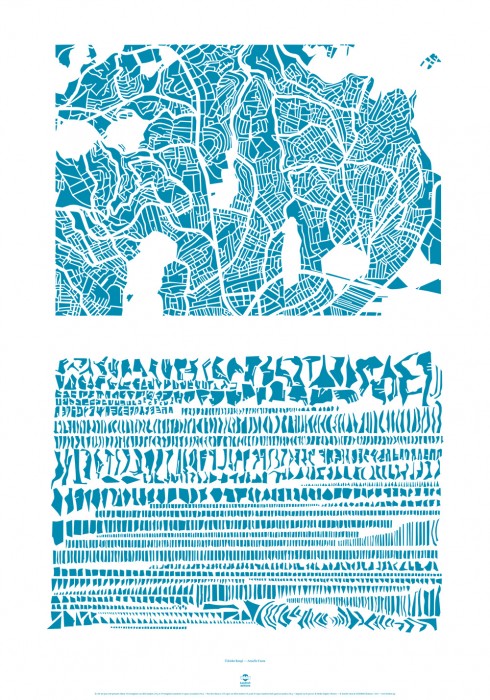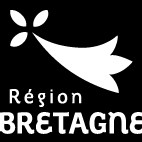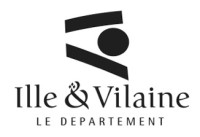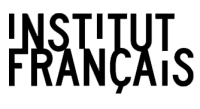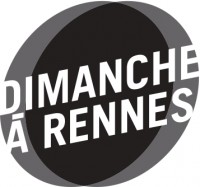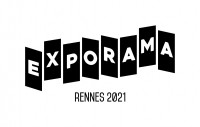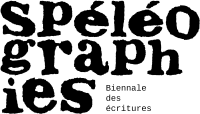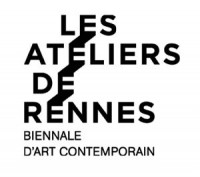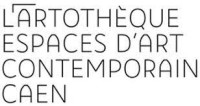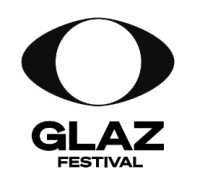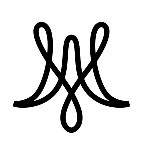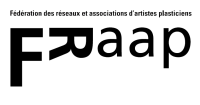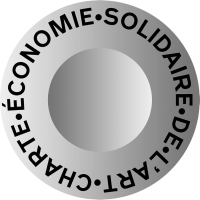31.10.14 - Rennes - France
Armelle Caron
Rennes Rangé & Üsküdar Rangé
Rencontre avec l'artiste Armelle Caron à l'occasion de la publication de deux nouvelles éditions : Rennes Rangé et Üsküdar Rangé (quartier d'Istanbul).
Extraire, démanteler, morceler, restructurer, réorganiser, manipuler, orienter, ranger : telles sont les opérations exécutées par Armelle Caron pour la réalisation de ses Villes Rangées.
Le point de départ de son travail est l’extraction d’un document du réel, en l’occurrence une carte (le dessin d’une réalité inerte et figée, d’un espace spécifique). L’artiste procède à une abstraction de la ville en établissant un rangement subjectif de micro-unités urbaines, ordonné selon sa propre logique. L’ordonnancement de ces entités urbaines résulte de leurs spécificités typologiques : taille, forme… De cette démarche émerge alors un « anagramme graphique », une recomposition et un remaniement du document sélectionné initialement pour lui conférer une nouvelle lisibilité.
Ranger la ville revient à apporter un nouveau regard sur notre environnement, à appréhender différemment le réel. Par ses interprétations monochromes, Armelle Caron tente de conférer à ses oeuvres une grande lisibilité, qui permet d’offrir une nouvelle lecture de la carte et de son territoire, une nouvelle approche géographique. Sa démarche artistique nous questionne sur la construction de la ville voulut par l’Homme, et sur son histoire en tant que lieu culturel et physique.
Ces deux éditions s'ajoutent à la série des Villes Rangées d’Armelle Caron qui comprend déjà Paris, Le Havre, New York, Berlin et deux versions du monde.
Meeting with artist Armelle Caron on the occasion of the publication of two new editions: Rennes Rangé and Üsküdar Rangé (a neighbourhood in Istanbul).
Extracting, dismantling, breaking up, restructuring, reorganising, manipulating, orienting, tidying up: these are the operations carried out by Armelle Caron in order to create her Villes Rangées (cities in rows).
The starting point of her work is the extraction of a real document, in this case, a map (the drawing of an intert and fixed reality, of a specific space). The artist carries out an abstraction of the city by establishing a subjective arrangement of urban micro-units, ordered according to her own logic. The organisation of these urban entities results from their typological specificities: size, shape...
From this process emerges a “graphic anagram”, a recomposition and reorganization of the document initially selected to give it a new legibility. Tidying up the city means taking a new look at our environment, apprehending reality in a different way. Through her monochrome interpretations, Armelle Caron tries to give her works a great legibility, which allows a new reading of the map and the territory, a new geographical approach. Her artistic approach questions us on the construction of the city wanted by Man, and on its history as a cultural and physical place.
These two editions are added to Armelle Caron’s series Ville Rangées which already includes Paris, Le Havre, New York, Berlin and two versions of the map of the world.
Sophie Toulouse


